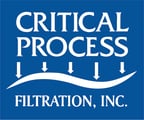Well-designed process filtration systems don’t usually experience premature fouling of filters, but upsets can and do occur.
Premature fouling is caused by an excess of particles in the fluid that wasn’t expected for the employed filter. It slows fluid flow through the filter, requiring additional filter changeouts, which translate into stopped processes, potential product loss, added costs, and an overall reduction in process efficiency. This article will provide insight and solutions for when one or more filters in a system are experiencing this issue.
Let’s look at a few different scenarios for premature fouling: a single-stage, multi-stage with prefilter issues, and multi-stage with final filter issues. We will presume that the flow rate and desired pressure drop were within the required range upon installation; the volume of fluid being filtered is within the original design limits of the system; and that the filters are chemically compatible with the fluid.
Causes of Premature Fouling
Finding the culprit for premature fouling will either be found in the filter, the fluid, a process component, or process activity. When a filter has been performing well for its expected life cycle and suddenly underperforms, chances are good that something else is responsible, however, inspection of the filter is always standard operating procedure. Root causes to consider are:
- Fluid hasn’t been tested or has large variations
- Changes in upstream processes have created more particles
- Aging equipment (pumps, valves, piping) shed particles into the fluid
- Changes in fluid sources (vendors, other plants, etc.) that have different kinds/distributions of particles
Single Filter System Fouling
Single filter systems are typically tasked with very low particle loads, such as purified water. More particles than expected in the source fluid, such as municipal tap water, will cause it to foul ahead of time. The situation can be rectified by one of the following:
- Increase filtration area to increase dirt-holding capacity
- Change or add filtration media to increase capacity
- Add filter stages to protect costly final/sterilizing filters
Prefilter Fouling in A Multi-Filter System
When the prefilter is the one fouling and the final filter is experiencing minimal pressure drop rise, then the prefilter is being asked to capture too much of the particle load. Protecting the more expensive final filter from fouling is the most important function of prefilters, but the final filter should still be required to do some of the work of the system. To balance the particle removal load, consider one of the following:
- Use a prefilter with a larger micron rating to allow more of the smaller particles to flow downstream to be removed by the final filter
- Change the media to one with a higher dirt-holding capacity
If the process requires that the prefilter remove all target particles and the final filter is not intended to remove any significant load, treat the prefilter as a single filter system and follow the options above.
Final Filter Fouling in a Multi-Filter System
When the final filter fouls prematurely and the prefilter is not experiencing a significant differential pressure increase then the prefilter is not performing its function of protecting the final filter. The solution is to use a prefilter with a smaller pore size rating to capture more particles. If, the new prefilter also experiences premature fouling and the final filter is still fouling sooner than expected, then change the prefilter to an even smaller pore size and follow the options for the single filter system above to improve the capacity of the new prefilter. Furthermore, it is not uncommon for filtration systems designed for high-fouling fluid to have 3 or even 5 filtration stages.
Evaluating Premature Fouling & Avoiding the Problem
Searching for the root cause of premature fouling will take time and effort. CPF can provide the needed services on your site or in our lab to help you investigate. The first steps are to determine the nature and source of the foulants, the size and amount of particles, as well as their materials. Inspection of the filter media and components will determine if the fluid and/or contaminants had any unexpected effects on the filters themselves. Reviewing the filter specifications will confirm if its intended use is in line with the source fluid and task. All results will guide further actions and filter choices.
The key to avoiding premature fouling is to evaluate fluids before system design to determine contaminant size and quantity and then choose the right filters for that fluid.
Testing & Analysis Services
CPF’s Technical Team is experienced, equipped, and available to help you design systems that avoid premature fouling either in response to one of the scenarios above or with up-front system design. As each facility, fluid, and filter system design is different; our experts tailor filtration solutions that work for your operation. Learn more about Critical Process Technical Services.
